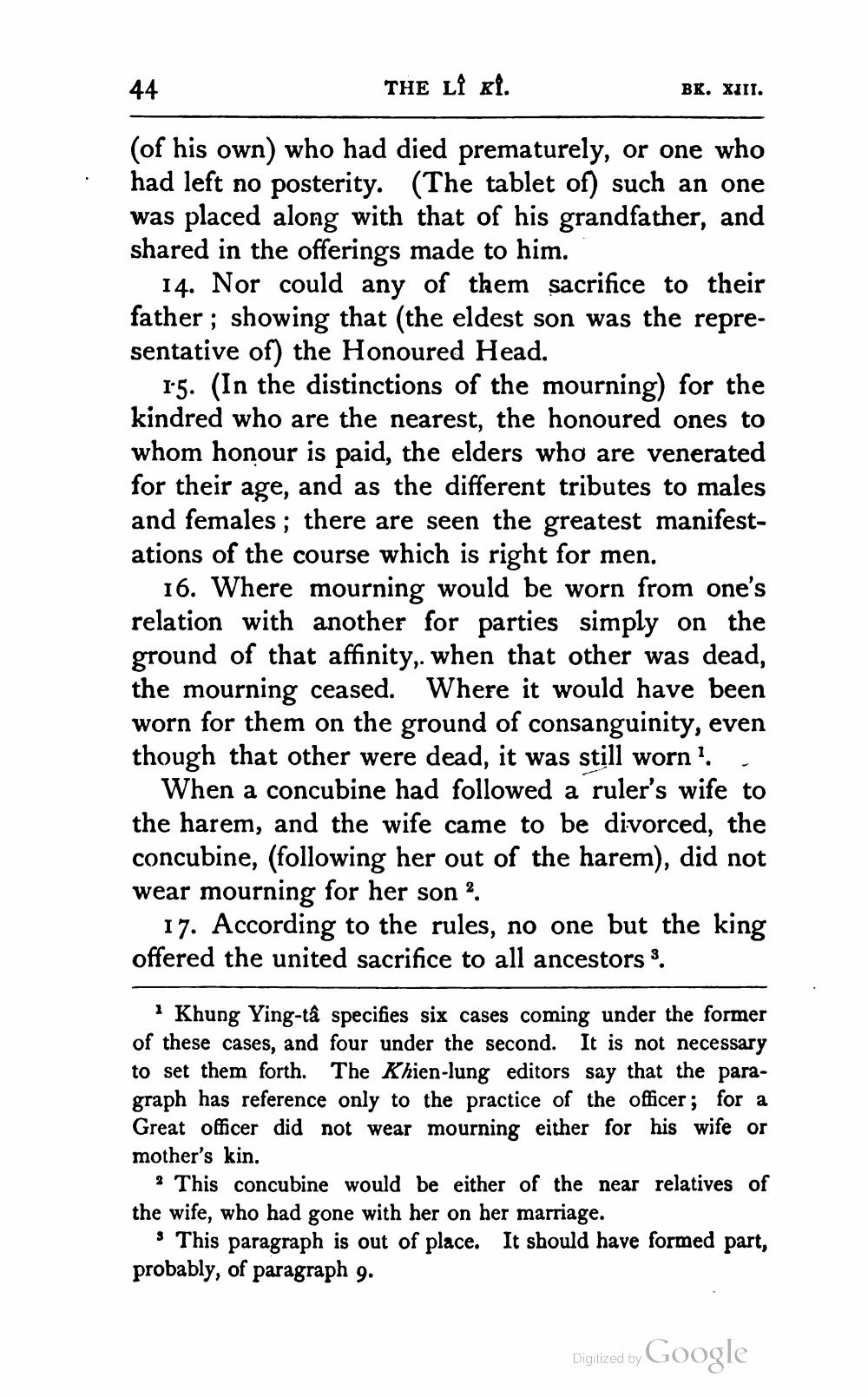________________
44
THE LÎ ki.
BK. XIII.
(of his own) who had died prematurely, or one who had left no posterity. (The tablet of) such an one was placed along with that of his grandfather, and shared in the offerings made to him.
14. Nor could any of them sacrifice to their father ; showing that (the eldest son was the representative of) the Honoured Head.
15. (In the distinctions of the mourning) for the kindred who are the nearest, the honoured ones to whom honour is paid, the elders who are venerated for their age, and as the different tributes to males and females ; there are seen the greatest manifestations of the course which is right for men.
16. Where mourning would be worn from one's relation with another for parties simply on the ground of that affinity, when that other was dead, the mourning ceased. Where it would have been worn for them on the ground of consanguinity, even though that other were dead, it was still worn .
When a concubine had followed a ruler's wife to the harem, and the wife came to be divorced, the concubine, (following her out of the harem), did not wear mourning for her son ?
17. According to the rules, no one but the king offered the united sacrifice to all ancestors 3.
Khung Ying-tâ specifies six cases coming under the former of these cases, and four under the second. It is not necessary to set them forth. The Khien-lung editors say that the paragraph has reference only to the practice of the officer; for a Great officer did not wear mourning either for his wife or mother's kin.
* This concubine would be either of the near relatives of the wife, who had gone with her on her marriage.
* This paragraph is out of place. It should have formed part, probably, of paragraph 9.
Digitized by Google




